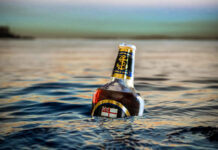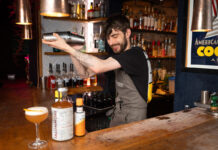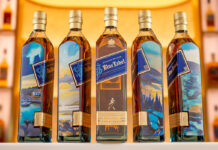With autumn on the horizon, licensees should be ready to switch up their offer

say firms
LAGER, ale, stout and low and no-alcohol beers accounted for close to £1 billion worth of sales in Scotland’s pubs and bars in the past year, according to CGA data.
Therefore, with beer accounting for such a large chunk of on-trade alcohol sales, it’s vital that operators do all they can to capitalise on this lucrative category.
That was the message from various brewers, who told SLTN that it pays to keep apace with the latest beer trends – especially as the seasons change.
Kirsty Huddleston of Harviestoun Brewery said: “Seasonally, when the leaves start to turn amber and red, so do the beers – before turning fully black.
“In darker months, consumers often turn to stouts and porters. With a fantastic selection out there, including interesting variations matured in whisky casks or flavoured with berries and fruits – there is a lot to choose from and fruit can provide a great introduction to darker beers, taking the edge off the bitter notes – our winter seasonal Raspy Engine, flavoured with Scottish hedge-foraged raspberries, is a cracking example of this.”
Ian Cumming, commercial director at drinks wholesaler Inverarity Morton, said that while he believes beer trends “don’t tend to fluctuate hugely between seasons”, brewers “do move towards making darker, richer, fuller styles of beer such as porters and stouts to reflect the change in our diets, and therefore palates, over the colder months”.
Andrew Chapman, director of sales and marketing at Keith Brewery, said other seasonal changes include a shift in consumer demand from packaged beers to draught.
“With less requirement to keep your beer chilled as the warmer weather disappears, consumers will begin to gravitate back towards draught,” he said.
Therefore, to prepare for this shift in demand, operators should begin making changes to their beer ranges now, reckons Chapman.
“Now is the time of year when it is beneficial for the on-trade to engage with breweries,” he said.
“Tap takeovers, beer tastings, food and beer matching events, meet the brewer events; all of these can help increase footfall at no extra cost to the outlet.”
Food pairing was also touted by Stephan Kofler, sales & marketing director of Krombacher.
“The beer has to be varied, exciting and of the best quality – and ensuring the beer links up with the seasonal food and the entertainment is also important in driving footfall and beer sales,” said Kofler.
He added that offering a diverse selection of low and no-alcohol beers “is extremely important”, warning that bars that fail to do so “are at risk of losing custom and even generating bad feedback online”.
Reinforcing this stance, Jerry Shedden of Heineken said over the past year the brewer has “seen a significant rise in the health-conscious consumer”, adding that it is a trend “that is here to stay”.
[box style=”0″]
Top tips
• For all the beer styles available, lager is still the most important and highest volume style – so get it right.
• Perfect the serve – you wouldn’t serve Champagne in a mug, so make sure you serve your lager correctly. It can make a big difference.
• Promotion is pivotal – you could have the best range but if you don’t promote it, no-one will know.
– Supplied by Krombacher.
[/box]



















